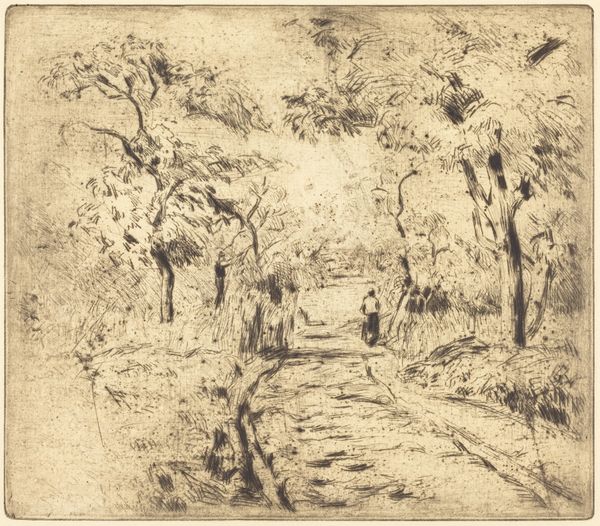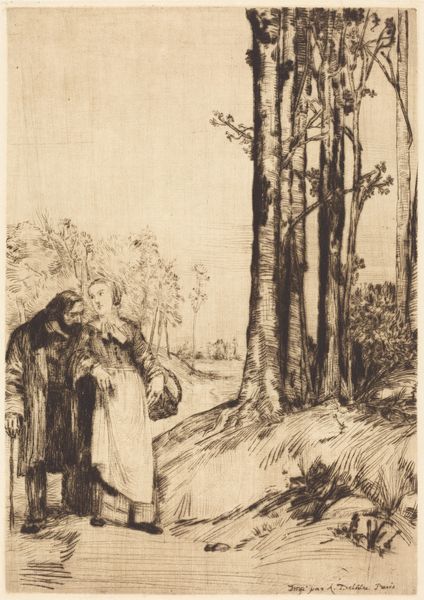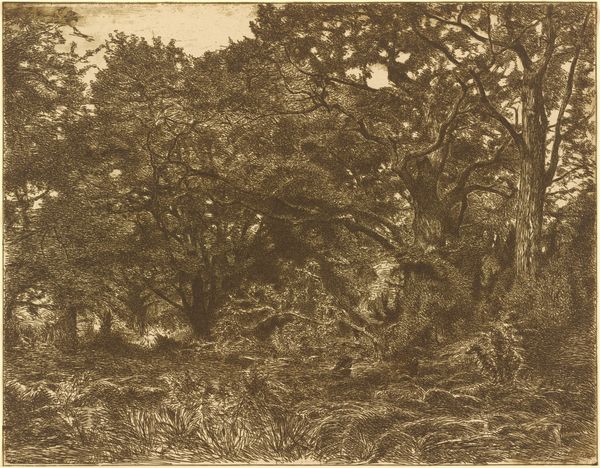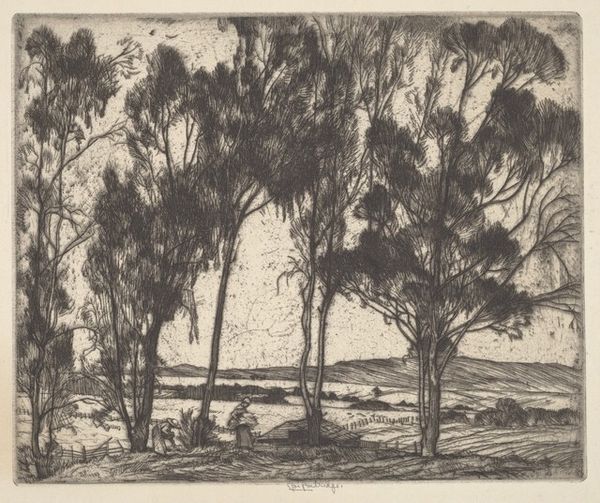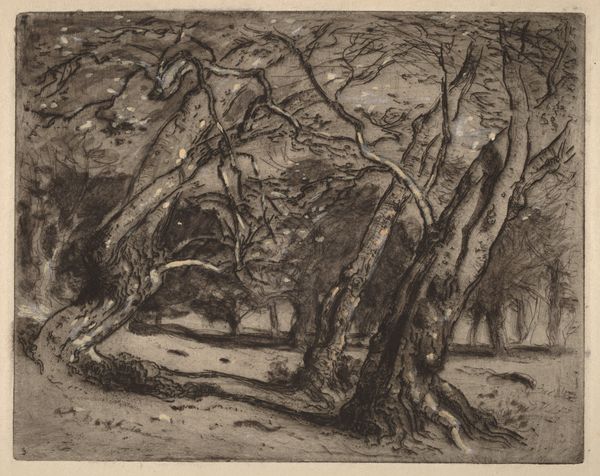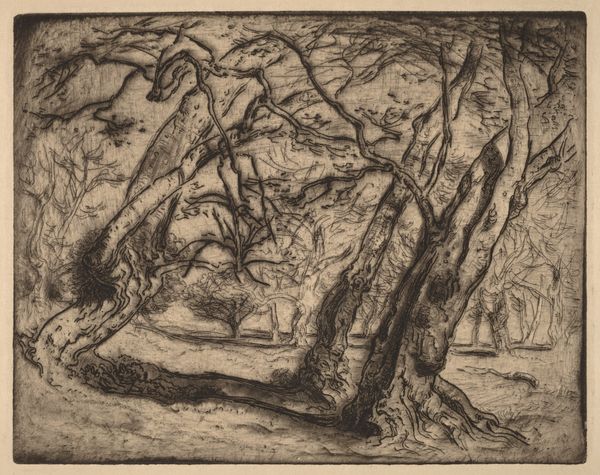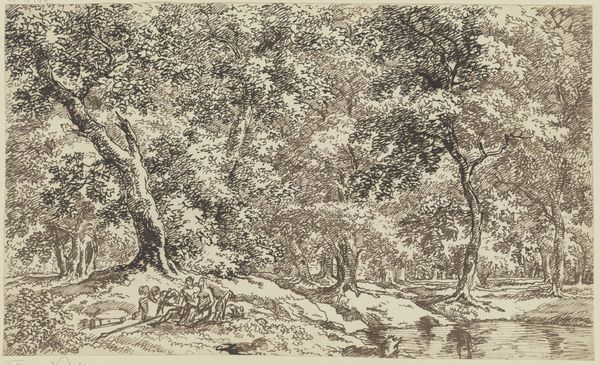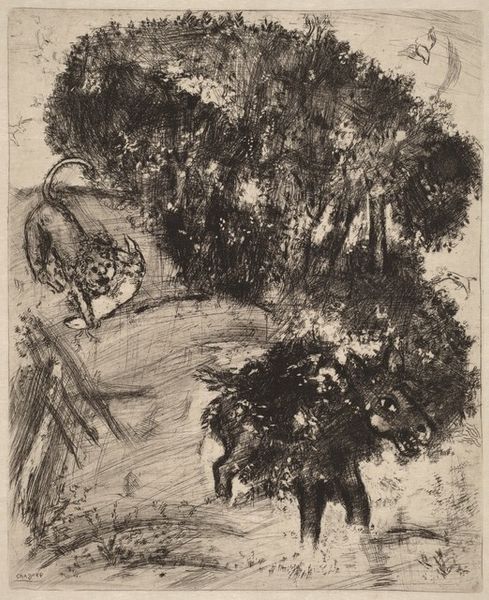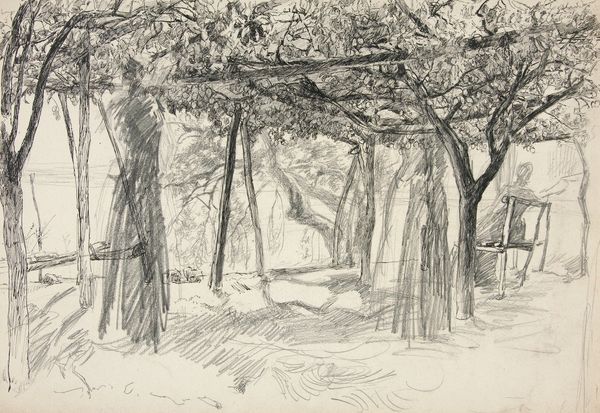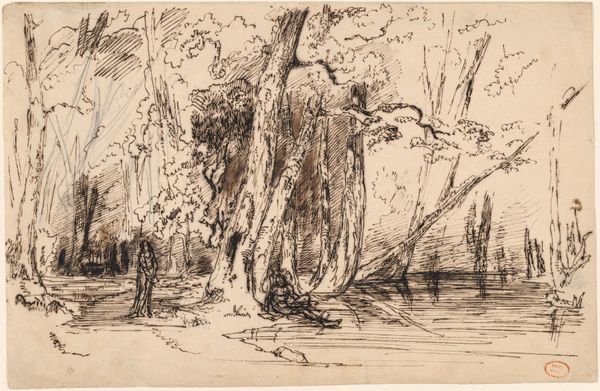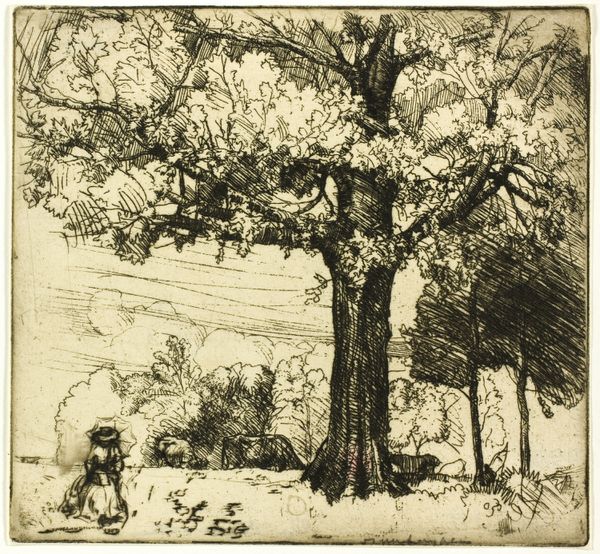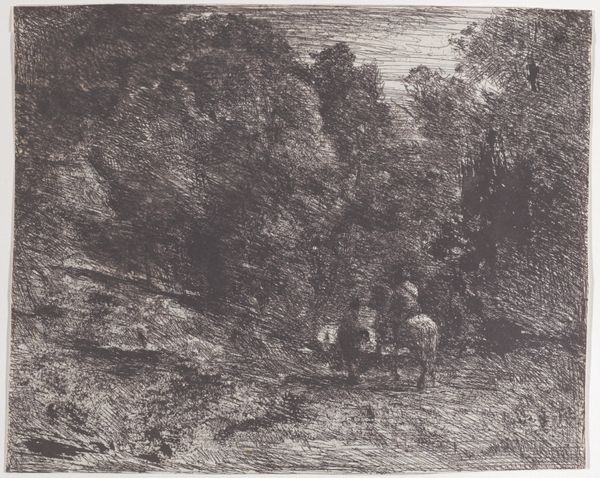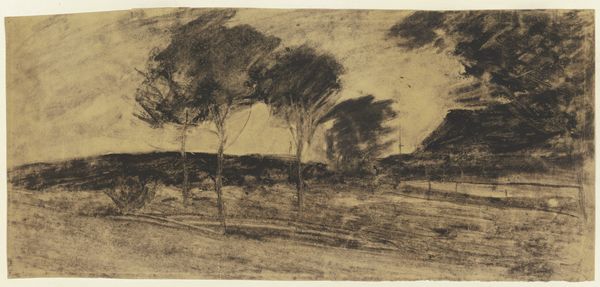
Dimensions: 93.98 x 113.03 cm
Copyright: Public domain
Curator: What a beautiful scene! There's something almost dreamlike about this grove. Editor: It’s indeed visually striking, reminiscent of Impressionist ideals and the Realist traditions. We’re looking at "Albanian Olive Pickers," painted in 1909 by John Singer Sargent. It feels more like a captured moment, in its portrayal of labour and landscape. Curator: Yes, "captured" is the word. Notice how Sargent isn't overly romanticizing their work. There’s dignity here, but it doesn’t shy away from showing the mundane realities, the bending and reaching involved in their harvest. It doesn't try to embellish an understanding of hard labour with idyllic visions, like some other pieces of that time period, which is part of what contributes to that very real dignity of these pickers you mentioned. Editor: Precisely! And let's consider Sargent's choices, perhaps influenced by plein-air practices – the effect of sunlight filtering through the dense canopy. There’s this beautiful contrast between light and shadow that really captures a specific time of day, and its broader place within artistic traditions, to then influence socio-economic structures related to work and cultural depictions. The cultural lens certainly influences my reading of it. Curator: Exactly. Sunlight becomes almost a character in itself, animating the scene, the same way light is employed as an active, vital element in religious paintings of the same period, suggesting, or imposing almost a divine symbolism to ordinary scenes and daily routines, wouldn’t you agree? In some paintings you find it almost "projected" into the narrative, imbuing a sacred understanding onto it. Editor: A compelling analogy! While some see social critique, others will indeed read that almost idyllic vision, projecting perhaps the visual language onto faith, imbuing almost transcendent qualities to these images, creating social identity as much as aesthetic beauty, depending on the audiences or readings. It highlights how visual and material culture create our understanding of the world. The politics of the scene's aesthetic is so incredibly fraught. Curator: It leaves us to examine what symbolism of everyday rituals can evoke or expose within cultural contexts. I find it beautiful and intriguing that it prompts such vastly different views even now! Editor: Definitely, it is these varying reactions which remind us of art’s enduring impact on audiences as much as its history.
Comments
No comments
Be the first to comment and join the conversation on the ultimate creative platform.
